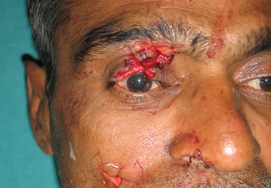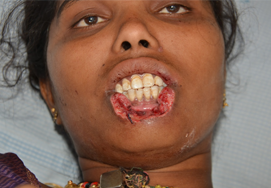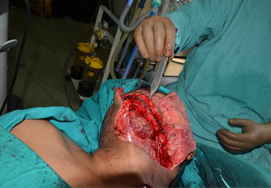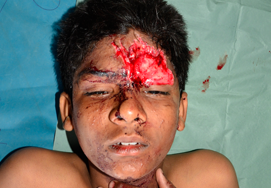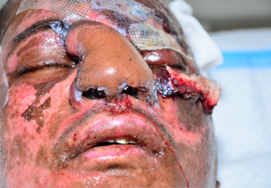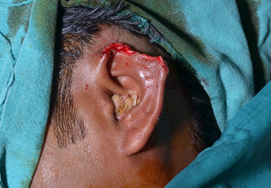Mandible Reconstruction
Indicated in certain traumas, osteoradionecrosis, bisphosphonate-induced osteonecrosis, and osteomyelitis

- What is a mandible reconstruction?
- Which individuals are eligible for the surgery?
- What are the types of surgeries?
- How should I prepare for the surgery?
- What is the aftercare of the surgery?
- What are the postsurgical considerations?
What is a mandible reconstruction?
Mandible is the lower jaw bone that mainly helps you to bite and hold the food. Mandibular defects usually occur due to trauma, inflammatory disease, or tumors that result in compromising of mastication, speech, and facial aesthetics. The mandible defines the lower contour of your face and therefore, and mandibular defect may produce cosmetic and functional deformities. In such a case, mandibular reconstruction primarily helps restore masticatory function and aesthetic appearance.
The goals of mandibular reconstruction are:
- Establishment of mandible continuity
- Correcting the adjacent soft tissue defects
- Providing sufficient strength for performing daily activities
Which individuals are eligible for the surgery?
Mandibular reconstruction is indicated in:
- certain traumas
- osteoradionecrosis
- bisphosphonate-induced osteonecrosis
- osteomyelitis
- Benign or malignant tumours
What are the types of surgeries?
Vascularized bone flaps generally provide the best functional and aesthetic outcome. Vascularized bone flaps are done with the aid of microsurgery. The types of vascularized bone flaps include the following:
- Fibula flap
The fibula flap is the best treatment option for mandible reconstruction as it provides a long segment of bone that can tolerate various osteomies without compromising the blood supply. It also allows the reinnervation of the free fibula is possible. - Iliac crest osteocutaneous flap
This flap provides a large piece of curved bone with natural curvature. This type of flap is used as a second-line free flap when the fibula is not available. - Scapular free osteocutaneous flap
The scapular osteocutaneous free flap provides an unparalleled quantity of skin and soft tissue and allows the flap to harvest with simple skin paddles for reconstruction of mandibular defects. This type of flap provides a large quantity of skin and soft tissue. - Radial forearm osteocutaneosu flap
The radial forearm flap provides a large quality of soft, supple tissue for reconstruction of head and neck, and thus helps in patients with inadequate bone stock. The bone should be harvested for not more than 30% of the circumference to prevent the fracture of the radius.
Your surgeon may use dentures or osseointegrated implants to shape the face and to assist with daily activities like mastication and verbalization.
Osteointergrated implants
The use of implants allows stable and strong anchorage for placement of implant-borne dentures even in the absence of alveolar ridge. This allows restoration of speech and mastication and also improves dental cosmesis.
How should I prepare for the surgery?
Before the surgery, proper planning is required to get the best output. Your doctor performs physical examination and evaluates the facial anatomy.
- Your surgeon may take photographs of your face to use during reconstruction.
- You should avoid alcohol consumption as it can affect your well being during and after the surgery. Some of the risks associated with alcohol are bleeding, infections heart problems, and longer hospital stay.
- Discuss with your surgeon about the medications you are taking as certain medicines may affect your recovery.
What is the aftercare of the surgery?
You may not be able to open your mouth after the surgery. It is very important to avoid pressure on the jaws for few days after the surgery. You will be fed through nasogastric tubing for few days until the swelling disappears. Then you will be given clear liquids to drink and then soft foods to eat.
If your leg is the donor site, you should keep the leg raised for the first 3 weeks to promote healing. You can use a walker for few days. Irrigate your mouth mouth wash. This keeps your mouth fresh and moist.
What are the postsurgical considerations?
- Take the medications regularly as directed by your surgeon.
- Drink plenty of water as pain medications may cause constipation. Eat fiber food as much as you can.
- Avoid direct heat and shaving on the incision area
- Avoid strenuous activities like lifting heavy objects for 6 weeks.
- Call the surgeon immediately if you have:
- Pain that is not relieved by pain medications
- Fever
- Increased discomfort and redness around the incision line
- Shortness of breath
- Drainage or accumulation of fluid from surgical site


